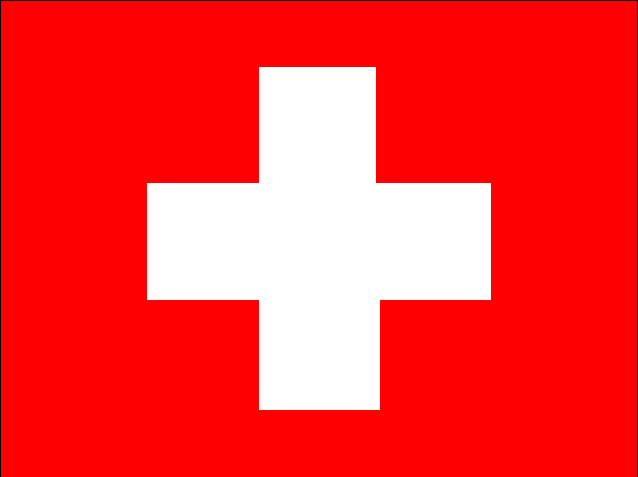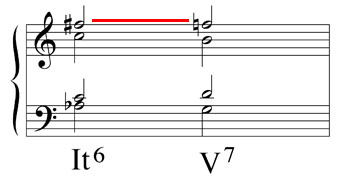The family of augmented sixth chords function as terminal pre-dominants, meaning that their normal resolution is to the dominant. There are four distinct types of chords within this category (although the origin of their monikers is uncertain): the Italian 6th (It6), the French 6th (Fr6), the German 6th (Ger6), and the Swiss 6th (Sw6). We will learn how to build the augmented sixth in stages, and the appropriate resolution of each of its parts.
1. Basic Components. There are three elements common to all standard augmented sixth chords:
a. the placement of the tonic in an inner voice - here we have chosen the alto;
b. a minor second below the dominant in the highest voice;
c. a minor second above the dominant in the lowest voice (if in a minor key, this will be the sixth scale degree and does not need chromatic adjustment).It is the two pitches that, in effect, surround the dominant that give the augmented sixth its name (Ab to F# in the example below).
2. Classes of Augmented Sixths. It is only the remaining, fourth voice that provides each augmented sixth chord with its particular quality:
a. the Italian 6th affords the chord an additional tonic;
b. the French articulates the second scale degree (it the most dissonant of the augmented sixths, containing two tritones);
c. the German employs a minor third above the tonic (the third scale degree if minor, the flatted third if major);
d. the Swiss is an enharmonic equivalent to the German, with a raised second scale degree instead of the flatted third (this version is almost only used in major key passages).
3. Resolutions. Both notes that create the 'augmented sixth' portion of the chord (the highest and lowest notes) resolve to the dominant root, and all but the Swiss drop the tonic to the leading tone. In the Italian, the second tonic resolves to the fifth of the dominant chord. Since the French already has that note in place, only oblique motion is necessary. The German will resolve the flatted third down by a step. However, this creates parallel fifths with the lowest voice and an alternative solution can be used instead (see 4. Irregular Resolution of the German Augmented Sixth below).
The Swiss is spelled as such in order to provide the raised second scale degree with the proper harmonic force to resolve up. This allows the progression to the dominant to be interrupted by the Cadential 6/4 chord (itself a terminal pre-dominant) before resolving in accordance with the other augmented sixths.
4. Irregular Resolution of the German Augmented Sixth. To avoid the parallel fifth problem that is inherently a part of the German sixth, in minor the Cadential 6/4 can be employed to interrupt the direct resolution to the dominant. Despite this other solution, many composers (including Mozart) relax the rule disallowing parallel fifths in such an instance. As well, since the German sixth sounds enharmonically identical to a dominant seventh chord, it can resolve as such to the Neapolitan (bII) of the home key.
5. Alternate Resolutions. Any of the augmented sixth chords (we have used the Italian below as an example) can resolve to the dominant seventh instead of the dominant triad. In order to do so, the highest voice will need to move chromatically down instead of up to the dominant root.











